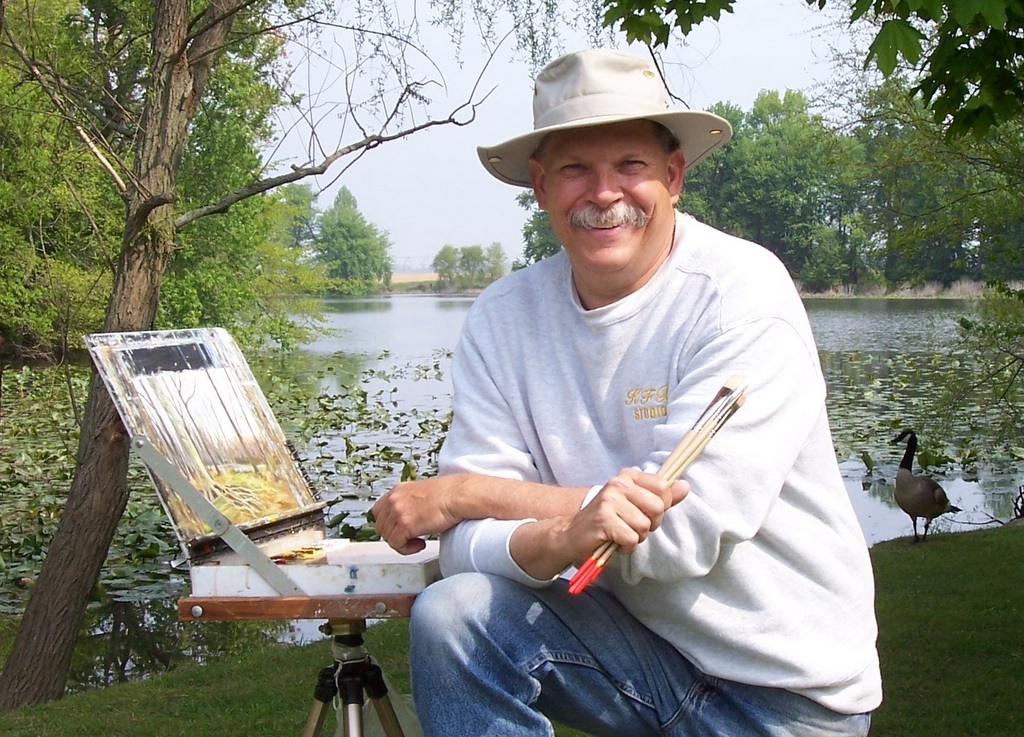

H. Earl Abbott Jr. is a native of Dover, Delaware. He received a BS in Art Education from Delaware State University in 1978 and has been a practicing professional artist since 1986. He specializes in realistically portraying Delaware and Marylands' Eastern Shore marine and agricultural landscape through both plein-air and studio paintings. A yearlong series of plein-air studies of the St. Jones River environment was featured in the Winter 2006 edition of Outdoor Delaware magazine, and an accompanying solo exhibition at the Sewell Biggs Museum of American Art was sponsored by the Delaware Department of Natural Resources and Environmental Control and the First State Heritage Park in Dover.
His work is included in many private and corporate collections throughout the eastern United States including Chesapeake Utilities, The Dupont Corporation, M&T Bank ( formerly Wilmington Trust Bank ), and Delaware State University. He is an associate member of the Miniature Painters, Sculptors & Gravers Society of Washington, D.C. He was a 2001 recipient of a Delaware Division of the Arts Established Professional Individual Artists Fellowship, and he resides, and maintains a studio, in Wyoming , Delaware with his wife Carol.


























































































